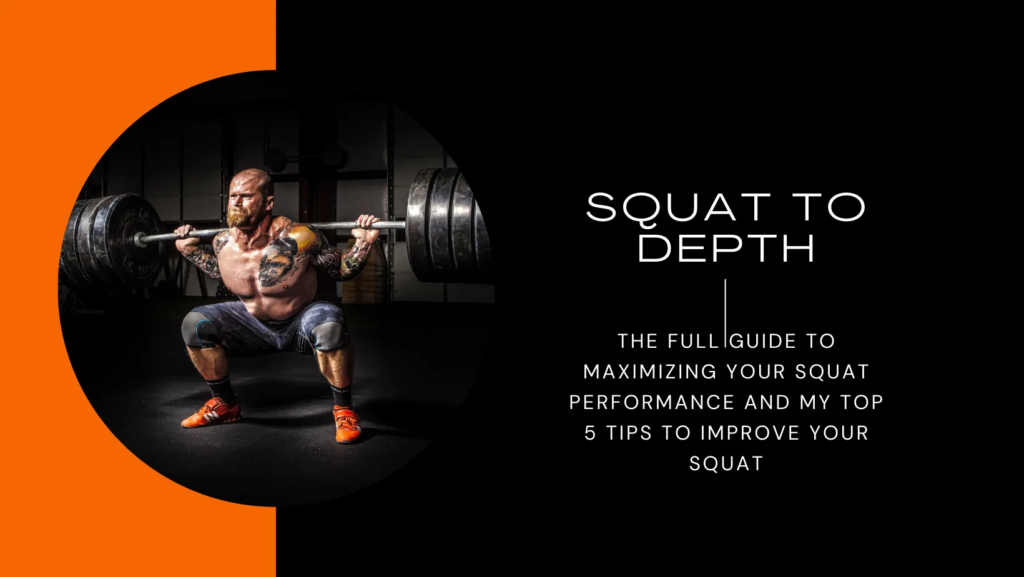The Barbell Back Squat Controversy
The barbell back squat is perhaps one of the most hotly debated exercises on the gym floor, rivalled only by kipping pull-ups, a subject for another day. The central point of contention? The depth of the squat and the weight on the bar. This issue particularly resonates with novice lifters.
The Importance of Squat Depth
Full Range of Motion: Why It Matters
Firstly, performing any exercise through its full range of motion is not just good practice; it’s essential for maximizing muscle and strength development. This is crucial for achieving full-range joint stability. Training muscles through only partial ranges will, over time, create imbalances that can lead to injuries. Most importantly, muscles trained through a limited range will not realize their full potential in terms of both size and strength.
Training the Weakest Point
When squatting without any weighted resistance, the hardest point to lift from is the very bottom, also known as “the hole.” This weakest point needs to be trained explicitly to build strength. Many novice and even long-time lifters avoid this precisely because it’s challenging.
The concerns of what others think
There are 3 reasons I most frequently see lifters suffering under loads they just can’t manage, and these are;
- Concerns about what others are thinking or even doing.
- They have reached a sticking point where they haven’t progressed in a while and are now trying to use more weight on the bar to feel like they are still progressing.
- Their Ego is so wildly out of control and needs people watching them as shakily unrack 160kgs and barely move the bar an inch before reracking.
Also, many gym goers lift far heavier weights than they can truly manage at the expense of depth. Ignoring the fact strength is not only about how much weight you can stand under but also how well you can control it through a full range of movement.
More Weight Isn’t The Solution To A Lack Of Mobility
Something that comes up quite often when mobility is the issue is when someone struggles to open their hips up enough to get into the bottom of the squat on their warm-up sets, and instead of addressing the mobility issue, they just add more eight to the bar in order for it to drive them into the hole.
This is the path to a potentially serious injury further down the line, as the lack of mobility is often a signal of instability/weakness in an opposing muscle group.
Exceptions to the Rule
Let’s be clear: A few people can’t squat to at least parallel due to anatomical limitations. However, for the vast majority, the real issues are poor technique or simply using too much weight.
How to Improve Your Squat: Top 5 Tips
1. Foot Positioning
The width between your feet can significantly impact your squat. If the stance is too narrow, the lifter may find it difficult to create enough space for the hips to open out. Long tibia and fibula bones in relation to the femur will also affect the shin angle, putting more torque on the knees and consequently reducing lumbopelvic hip complex (LPHC) and hamstring engagement.
2. Ankle Mobility
Poor ankle mobility can also be a limiting factor. A half-kneeling dorsiflexion test can quickly assess this (link to Squat University provided). Fortunately, mobility issues can often be corrected with targeted exercises unless there’s a bony block issue.
3. Sequence of Movement
The sequence in which you initiate the squat also matters. The hips should push back before the knees begin to bend. This sequence allows for better LPHC and hamstring engagement and creates a strong, stable, and deep squat.
The Two-Part Weight Issue:
Part 1 – Getting Passed Sticking Points
Getting past sticking points can be done by still squatting to depth but using different techniques and methods, such as pause squats, changing up the program to a block using different rep ranges, or even switching out back squats for front squats for a block, are all great ways to move past sticking points without sacrificing form and depth.
Part 2 – Solving Mobility
Spend some time developing glute strength and priming your glutes through various warm-up methods like open half kneeling and hip thrusts before you squat to develop your hip mobility, allowing you to squat deeper without needing the sheer weight of the bar to force you into the bottom of the squat.
To Conclude
Squatting is hard, and the right to squat heavy has to be earned through proper technique and consistent practice. Remember, you’ll gain more respect by squatting to depth with good technique than by heaving a lot of weight poorly. If you follow these tips and maintain good nutrition and a progressive overload strategy, you’ll outperform the quarter-squatters in no time. Rest assured, if you can squat 100kgs to full depth, you are definitively stronger than someone who quarter squats 120kgs.

